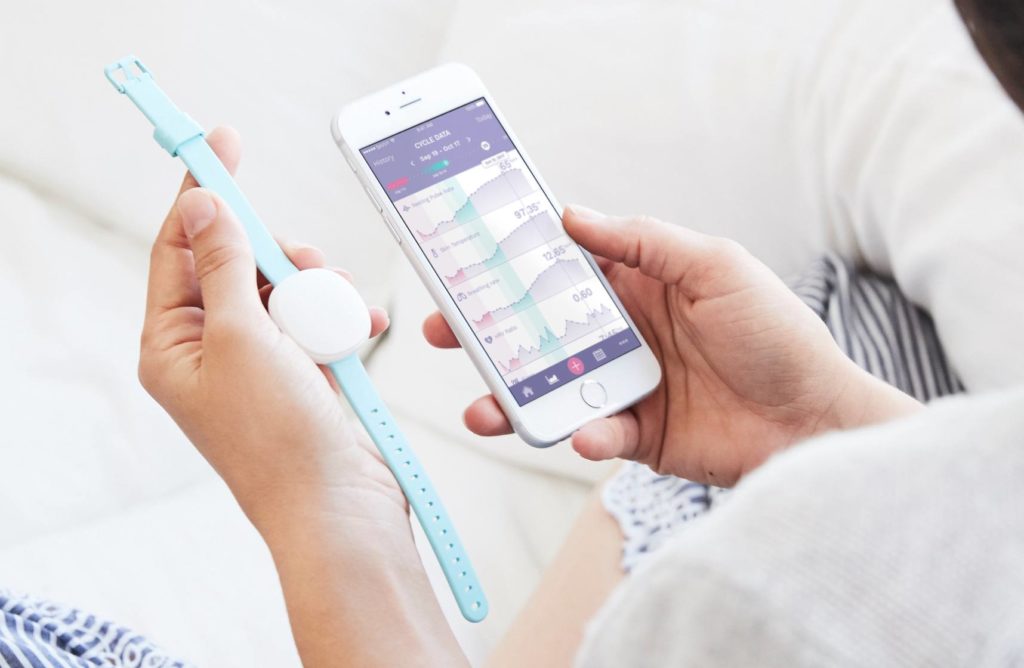
Fertility on hold: what you can do while you wait
Right now, all fertility treatment cycles—and for many, even trying to conceive naturally—are on hold due to the coronavirus COVID-19 pandemic. However, there are things you can do during this waiting period to help optimize your outcome when you, and the world, are ready.
What you can do now to prepare to conceive post-pandemic:
Think constructively about your reproductive goals
Even if you’re 100% certain you want children, there are still questions you can ask yourself now that will allow you to have a more productive conversation with your partner and/or your doctor.
- What does my future family look like? How many children do I want, and how far apart?
- When do I think I may want to—or be able to—begin trying to conceive? (Of course, the answer to this may be “as soon as COVID-19 restrictions are lifted.”)
- Are there specific goals I have in mind for using IVF, such as gender balancing or preventing the inheritance of a specific illness?
- Do I already know I may have certain obstacles to conceiving naturally, such as being in a same-sex couple or preexisting reproductive illness?
The answers you come up with will allow you to enter the next phase more in-tune with what you and/or your partner want for your future, and allow your doctor to provide guidance to help you meet those goals.

Track your cycles, if you aren’t already
Tracking your menstrual cycles gives you lots of data that will be important and valuable when trying to conceive and/or meeting with a fertility specialist.
At its foundation, cycle tracking is the process of monitoring and recording signs and symptoms of menstruation and ovulation. This gives you an idea of your monthly “fertile window,” the days before and after ovulation when you’re most likely to be able to conceive naturally, as well as an overall perspective on the regularity and health of your cycles. These records can also help your doctor assess the possibility of polycystic ovary syndrome (associated with long or irregular periods) or other imbalances or illnesses.
There are a few methods you can use to track your cycle:
Basal body temperature tracking
Your “basal body temperature” is the lowest temperature your body reaches during the day. It’s typically found by taking your body temperature just after you wake up (before you do any physical activity), and many people keep a thermometer at their bedside for this purpose.
Ovulation causes a slight rise in basal body temperature—about .4ºF—for about 72 hours, so measuring your temperature daily can help you pinpoint when you’re ovulating. (An added benefit of regularly testing your body temperature is it can also help you catch a fever—is one of the primary symptoms of COVID-19—early.) You can track your BBT using old-fashioned pen and paper, or try an app like Natural Cycles to make it a bit simpler.
The Ava bracelet
The Ava bracelet is an FDA-approved device worn while you’re sleeping. The bracelet uses biometric feedback like heart rate and skin temperature to track when you enter the different phases of your menstrual cycle: the follicular phase (when your ovaries are maturing eggs for ovulation), ovulation, the luteal phase (post ovulation, when the ovaries and uterus are preparing for possible pregnancy), and menstruation.
Our own Dr. Bat-Sheva Maslow sits on Ava’s medical advisory board.
Period tracking apps
Apps like Glow and Clue (and even the Apple Health app on your iPhone) allow you to track menstruation and some signs of ovulation, creating a record of your past cycles. These apps typically provide an estimated window when you’ll get your period and and/or ovulate, based on data from your past cycles.
Unless paired with basal body temperature measurements, these apps aren’t as accurate as other methods of cycle tracking, but they can still offer some valuable information to bring to your doctor, such as how long your cycles are, how regular they are, and a list of symptoms you frequently experience.
Proov test to confirm ovulation
Proov is a newer tool that’s used to confirm that adequate ovulation has taken place. Essentially, it’s an easy at-home urine test kit, similar to a pregnancy test, that checks for the presence of elevated progesterone, the hormone that the body releases after ovulation. For those who aren’t sure if they’re regularly ovulating—for example, those with PCOS—or are concerned about having inadequate progesterone levels, Proov can be a helpful way to track the phases of your cycle more accurately, and understand whether you’re actually ovulating (or not).
Do an at-home fertility hormone blood test
Anti-Mullerian hormone (AMH) is created by the follicles (or immature eggs) in the ovaries. The level of AMH in your blood gives doctors a rough estimate of your total egg supply. It’s also a great indicator of how close you are to menopause, and a way to predict with fairly high confidence how your body may respond to an IVF cycle.
Learn more about ovarian reserve testing.
Since in-person testing isn’t an option at the moment, we’ve partnered with Modern Fertility, an at-home fertility testing company. Here’s how it works:
- Order a test kit directly from Modern Fertility.*
- Agree to share the results of your testing with our team through Modern Fertility’s online portal.
- Do a simple finger-prick blood test at home, according to the kit’s directions.
- Pop it in the mail.
- You—along with our team—will get results in about 10 days.
In addition to the AMH test, Modern Fertility’s kit will test for other fertility-related factors, such as estradiol, testosterone, and the hormones that regulate thyroid function.
The results of this testing will give you and your doctor some hard data to discuss when it comes time for your consultation. This means we can give you the most accurate and realistic look at your personal fertility, and your chances of success with a treatment like IVF.

Do an at-home semen analysis
Male infertility or subfertility is a factor in over half of infertility cases. Unlike eggs, which are with you since birth, sperm are created every day (approximately 1,500 of them!), and the health of those sperm are significantly impacted by lifestyle factors and medical history. Based on the timeline of sperm production, once a lifestyle change has been made, it takes about 2 ½ to 3 months for those healthier sperm to be present in a semen sample.
A semen analysis is the best way to evaluate sperm and semen health. The test involves providing a semen sample, collected via masturbation, which is then examined under a microscope to determine the semen volume, sperm count and concentration (how many sperm there are in the sample) and the percentage of motile (moving) and morphologically normal (properly shaped) sperm. Doing a semen analysis now can offer you the time necessary to address some of these issues before you’re ready to try to conceive or start fertility treatment.
In this era of social distancing, at-home options like Legacy are perfect. Legacy provides a mail-in kit with a special media that preserves a sperm sample to allow for shipping. The Legacy report includes the five key elements of sperm health mentioned above—volume, count, concentration, motility, and morphology—as well as comprehensive recommendations for lifestyle changes that can improve these characteristics.
Schedule a virtual consultation or follow-up appointment
You may not be jumping into treatment right now, but that doesn’t mean you need to wait blindly. If you know—or suspect—you may be experiencing infertility, now is a perfect time to meet with a doctor (virtually, of course!). This gives your doctor time to start thinking about your case, reviewing your history, and making recommendations about what to do next.
At a fertility consultation, you’ll meet with a reproductive endocrinologist (a fertility specialist doctor) and go over your fertility story: how long you’ve been trying, any past pregnancies, any relevant medical history, and your reproductive goals (those questions we asked you to think through above).
If you’ve shared the results of your blood testing, either through Modern Fertility or another doctor, your doctor can discuss what those results mean for you. It’s also a great idea to share relevant medical records and have information about your cycle on-hand (if you’ve been tracking). All of this will help your doctor give the best guidance possible on what you should expect next.
Address lifestyle changes
Stop smoking
Cigarette smoking is one of the only lifestyle factors that we know, with very good evidence, negatively affects male AND female fertility. In fact, according to the American Society for reproductive medicine, infertility rates for smokers—both male and female—are about twice the rate of infertility found in nonsmokers.
Smoking affects how many eggs you have, also known as your egg count; smokers experience menopause up to 4 years earlier than non-smokers (according to ASRM). Smoking damages the genetic material of your eggs; ASRM reports that miscarriage and offspring birth-defect rates are higher among smokers. Smoking can also impact your results with ovary-stimulating medications, like those used in IVF—studies show that female smokers require more medication during IVF, and still end up with fewer eggs at retrieval time.
Smoking also has a measurable impact on sperm health. According to ASRM, male smokers have lower sperm counts and motility, as well as increased numbers of abnormally shaped sperm. We also know that, as with eggs, smoking can impact the genetic health of sperm.
Bottom line: smoking has a huge impact on your fertility and your overall health (including how at-risk you are for COVID-19). If you’re looking for an excuse to quit, let this be it!
Get in an exercise routine, and get to a healthier body weight if necessary
This is especially important for male fertility. As we discussed above, sperm health is influenced by lifestyle, including exercise. Several studies have linked exercise frequency to an increase in sperm health and sperm count. In one small study, men who practiced “vigorous physical activities” for more than 2 hours per occasion at least 3 times per week had better sperm motility and morphology, and lower levels of dead or dying sperm in their semen samples.
It’s hypothesized that exercise may increase testosterone levels, but additionally, some of the benefits from exercise may come from shedding excess weight. Being overweight or obese has been associated in research, such as a 2017 study of over 2,300 men in China, with lower sperm count/concentration and decreased motility. Remember that changes to lifestyle can take up to 90 days to make a difference in a semen sample—so now is a great time to start.
For female partners, exercise will have a less direct impact on fertility, but will still help maintain overall physical (and mental!) health that’s important for conception and pregnancy. If you’re obese or overweight and have PCOS, losing 5–10% of overall body weight can improve insulin resistance, reduce elevated androgen levels, and increase ovulation and pregnancy rates.
On the other hand, having a body weight that’s too low can also make it harder to conceive, as very low body fat percentages can result in irregular or no periods (meaning, irregular or no ovulation). Being underweight is also associated with a higher chance of negative pregnancy outcomes, such as miscarriage or premature delivery.
No matter what “better physical health” looks like for you personally, taking this time to make positive changes is a great way to prepare to conceive, either naturally or with fertility treatments.
Consider starting fertility supplements and prenatal vitamins
Fertility supplements: DHEA and CoQ10
DHEA and CoQ10 are supplements: DHEA (dehydroepiandrosterone) is a hormone produced by your body’s adrenal glands, and Co (coenzyme) Q10 is an antioxidant that protects cells from damage.
There’s some evidence that these supplements can improve the results of fertility treatment, specifically for those with diminished ovarian reserve (or low egg supply). Use of these supplements together may improve the ovary’s response to medication, according to one study; may lower the amount of medication required, according to another; and may increase pregnancy rates during IVF according to others (1, 2).
If you know that you fall into the “low egg supply” category, starting these supplements may help you get the most out of fertility treatment later. You can discuss this supplementation—including what kind, how much, and when to take—with your doctor at your consultation.

Prenatal vitamins
Ideally, you should begin taking prenatal vitamins 3 months before you conceive, as well as throughout your pregnancy. That’s because so much of a fetus’ important development happens in the early stages of pregnancy.
Prenatal vitamins should contain a few key ingredients:
- DHA, an omega-3 fatty acid that supports the development of a baby’s brain and eyes;
- Folic acid (or folate), a B vitamin that’s used by your body to make new cells and can help prevent birth defects; and
- Vitamin D, which emerging research suggests can help reduce the chances of miscarriage.
The Natalist prenatal supplement duo is one great option.
Financial planning: understand cost, insurance coverage, and payment options
Finally, if you know you’ll be starting a cycle of infertility treatment after restrictions are lifted, now is a great time to figure out the least fun part of trying to conceive: the finances.
If you’ve met with a doctor, you may have an idea of the type of treatment you’ll be starting in the future. We recommend speaking to one of our financial advisors to ensure you understand all the costs of fertility treatment, including medications purchased from a pharmacy. If you have a specific protocol, you can even contact pharmacies to get an idea of the cost of the medications you’ll be using (and shop around to get the best price).
Learn more about the cost of fertility medications—and how to lower them.
If you have insurance, it’s a good time to get a handle on which fertility treatments and/or medications may be covered—and note that if you’re in New York, this may have changed as recently as January. It’s also a good idea to get familiar with requirements your insurance plan may have, including prior authorization (a process by which your doctor needs to request approval for treatments or medications in advance to ensure coverage) or specific pharmacies.
Finally, you can review your financing options. Financing for fertility treatments is available through several different companies; it does come with interest (how much depends on your personal credit application), but it offers the option of an easy monthly payment for your cycle, medications, and even storage of frozen eggs or embryos.
Working out the finances of fertility treatment now gives you time to plan—and save, if you need to—so you can be ready when we are.




